Indianapolis Motor Speedway Museum (IMS Museum) has selected RM Sotheby’s to bring some of their most significant cars to market. Proceeds will increase the Museum’s endowment and long-term financial sustainability.
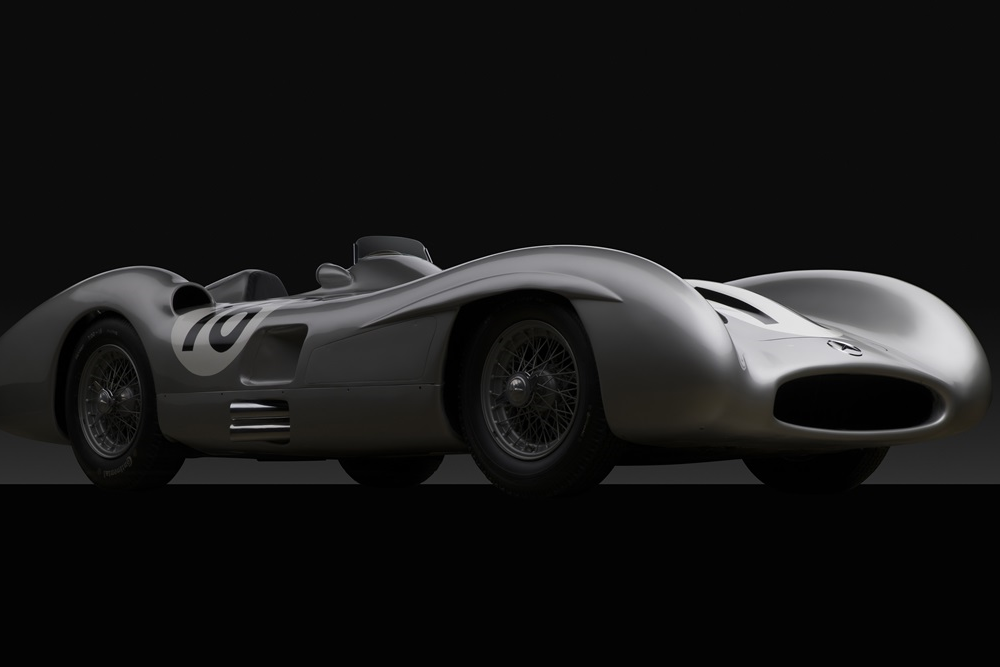
RM Sotheby’s, in partnership with the Indianapolis Motor Speedway Museum, is excited to announce the sale of some of the world’s most desirable and historically significant cars to support the Indianapolis Motor Speedway Museum’s long-term financial sustainability and allow the Museum to further enhance the care of its collection of Indianapolis 500 and Indianapolis Motor Speedway artifacts. Among the legendary vehicles being offered are the 1954 Mercedes-Benz W196 driven by iconic drivers Juan Manuel Fangio and Stirling Moss, the 1965 Le Mans-winning Ferrari 250 LM, a Le Mans-raced Ford GT40 Mk II, and some of the most significant Grand Prix cars from the early 1900s.
Thanks to the generosity of donors and members, the Indianapolis Motor Speedway Museum is transforming its facility and exhibits to provide more interactive, immersive, and diverse storytelling and experiences that can be enjoyed by guests of all ages and backgrounds. During its renovation, the Museum is continuing to evaluate its collection to ensure alignment with its mission of celebrating and preserving the history of the Indianapolis 500 and Indianapolis Motor Speedway.
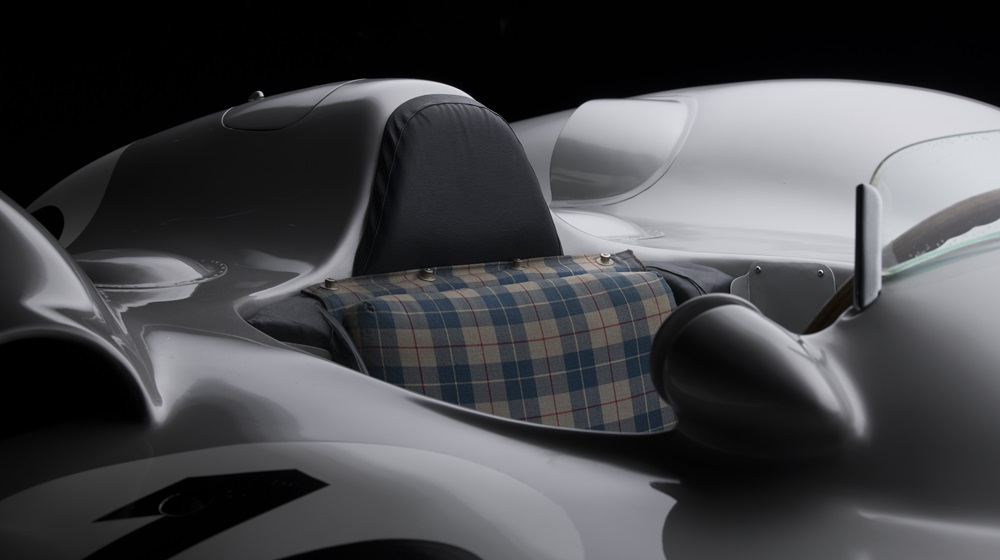
While the IMS Museum has thousands of unique and historic racing artifacts, some of them—while impressive pieces of automotive and racing history—do not align with the Museum’s mission. After much consideration, the Museum decided to deaccess and sell the last of the vehicles in its collection not directly connected to the Indianapolis 500 or Indianapolis Motor Speedway. The proceeds from the sale will boost the Museum’s endowment, ensuring long-term financial viability. It will also provide for enhanced restoration, care, and display of the Museum’s current collections through advanced and new technologies, such as an archival storage system, state-of-the-art fire suppression, and mounting materials for displays.
“Our Stories Behind the Spectacle capital campaign is helping to fund the complete reimagining of the IMS Museum, from new structural and state-of-the-art technology installations to interactive exhibits and experiences. The deaccession and sale of these artifacts are earmarked specifically to help us create a more robust endowment to be used for caring for our collection, ensuring our long-term financial viability and position as an internationally recognized cultural institution for years to come.” – Joe Hale, President, Indianapolis Motor Speedway Museum
“We’re excited to partner with the Indianapolis Motor Speedway Museum to ensure that it is able to continue sharing the stories of the Indianapolis 500 and Indianapolis Motor Speedway for generations to come. These vehicles will be some of the world’s most significant cars ever sold. From the Moss/Fangio-raced W196 to the Le Mans-winning 250 LM, and even a land speed record car, these aren’t just significant; they are the pinnacle of collecting. There is almost nothing to compare them to, and knowing they are being sold for such a worthy cause is a great feeling.” – Gord Duff, Global Head of Auctions, RM Sotheby’s
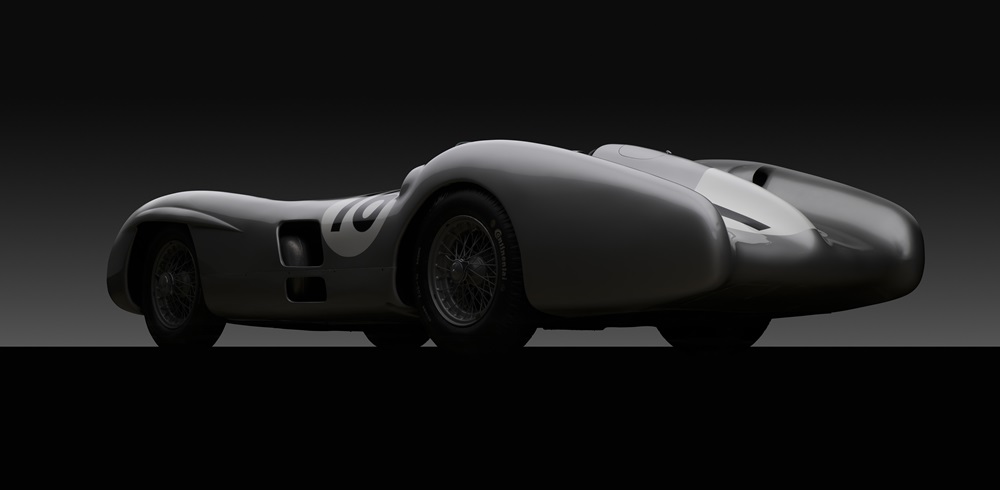
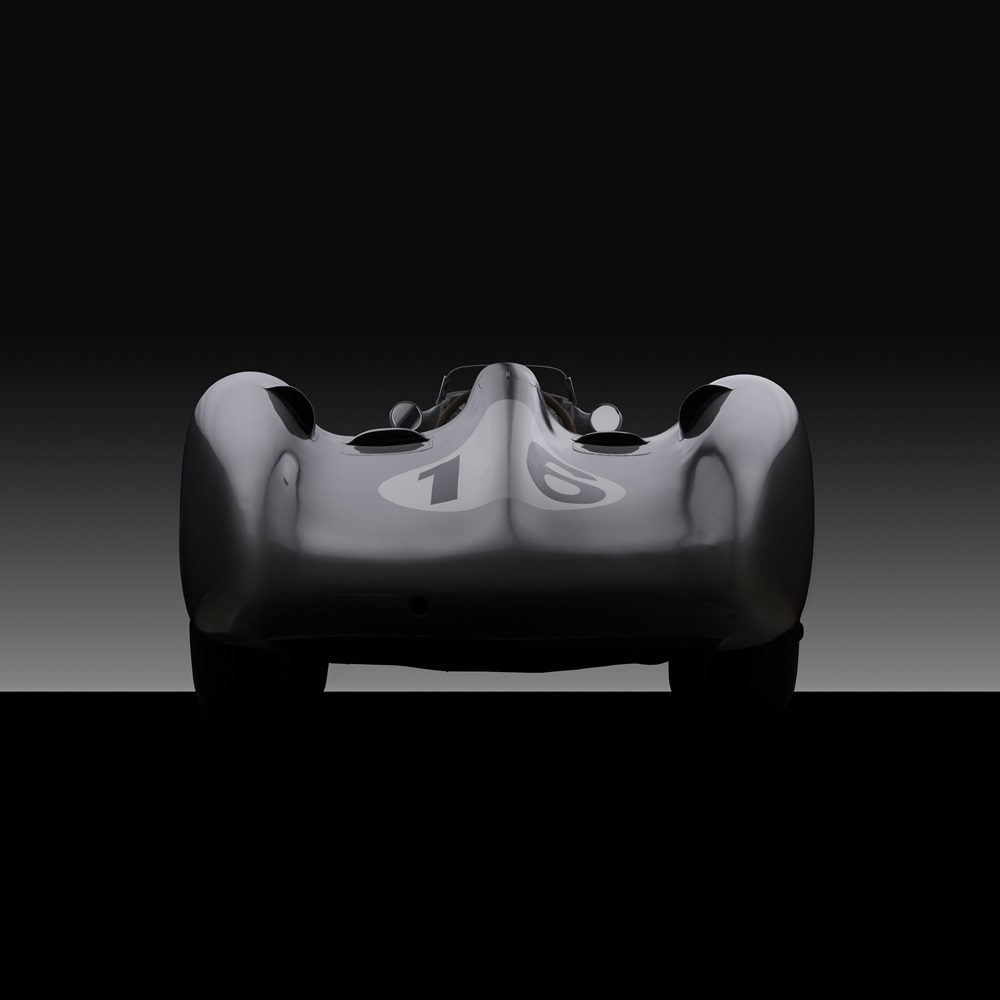
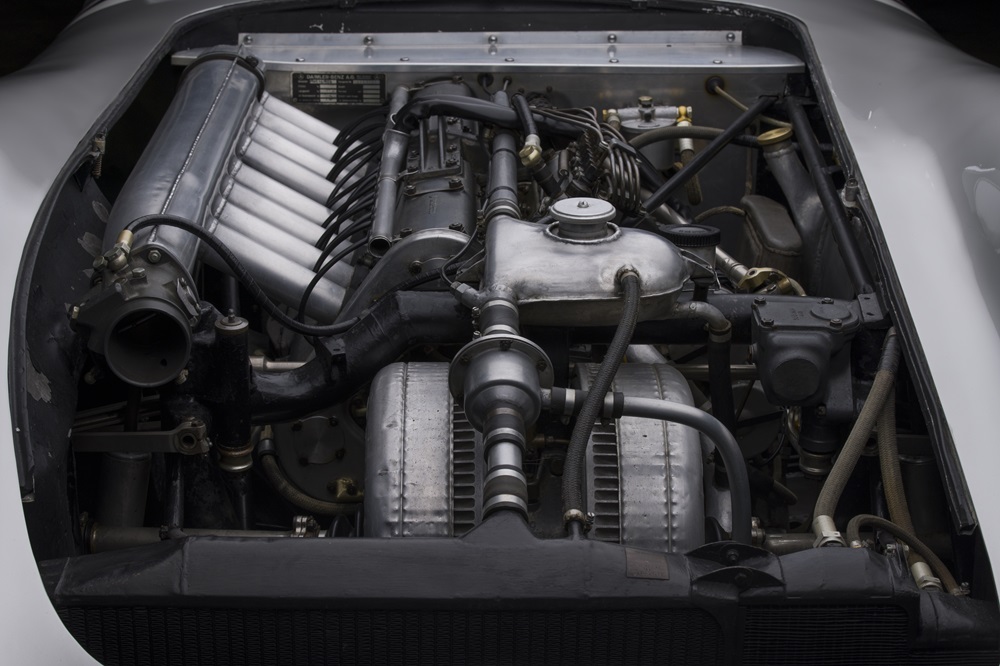
Vehicles in the Sale:
1954 Mercedes-Benz W196 Streamliner ‘Monza’
This W196 holds the unique distinction of being driven by two of motor racing’s best drivers, Juan Manuel Fangio and Sir Stirling Moss. Originally featuring an open-wheel body, Fangio would pilot this car in a non-points race in Buenos Aires in 1954. Later on, this chassis would receive the iconic streamlined body work and was then driven by Moss at the 1955 Italian Grand Prix at Monza. At the race Moss would achieve the fastest lap earning him one point in the World Drivers’ Championship that year. Mercedes-Benz subsequently used the car as a practice and test car. This Mercedes-Benz was donated to the Indianapolis Motor Speedway (IMS) in 1965 directly from the factory (Estimate: $50,000,000 – $70,000,000 USD).
1964 Ferrari 250 LM
This historically significant Ferrari 250 LM was the Chinetti/NART entry for the 1965 running of the 24 Hours of Le Mans, a race in which Masten Gregory and Jochen Rindt achieved an impressive first overall finish, a feat not accomplished again by a Ferrari until 2023. Following Le Mans, the Ferrari would compete in the 1966 24 Hours of Daytona finishing sixth in class and ninth overall with Jochen Rindt and Bob Bondurant behind the wheel. Two months later it was displayed at the New York Auto Show. This 250 LM would go on to compete at Le Mans two more times, making it a three-time entrant in the 24-hour endurance classic, and one of just six Ferraris to compete at Le Mans three times in the Enzo era (1947 to 1988). Incredibly, of the eight races it participated in during its racing career, seven were 24-hour endurance races—a three-time entrant in the 24 Hours of Le Mans and a four-time entrant in the 24 Hours of Daytona. This special Ferrari has been shown at the Pebble Beach Concours d’Elegance and the Amelia Island Concours d’Elegance. The Ferrari was acquired by the IMS Museum in 1972 from Kirk F. White.
1966 Ford GT40 Mk II
This 1966 Ford GT40 Mk II made its racing debut as the Holman-Moody entry at Sebring in 1966, driven by Walt Hansgen and Mark Donohue. They finished second behind Ken Miles and Lloyd Ruby in the Shelby American entry. To date it marked the best finish for Holman-Moody at Sebring. Following further testing, this car was prepared by Holman-Moody for the 1966 running of the 24 Hours of Le Mans where it was driven by Mark Donohue and Paul Hawkins. It was one of three Ford Motor Company/Holman-Moody GT40 Mk IIs participating in the race. After Le Mans the car was shown in Europe and by 1967 it was returned to Holman-Moody and put into storage, never to race again. It’s because of this that this car is believed to be one of the more original Mk II examples as the car did not receive the racing updates other examples that continued their racing career did. This GT40 Mk II benefits from a restoration in the 2000s and is presented as it was raced at Le Mans in 1966 finished in the unique period Mustang shade of Emberglow with white side stripes and green DayGlo patches. Ford Motor Company donated the car in the 1970s.
1957 Chevrolet Corvette SS Project XP64
The Corvette SS was Chevrolet’s first purpose-built race car utilizing the best materials and proven designs of race cars of the 1950s and may be the only magnesium-bodied Corvette ever made. It also marked the first use of SS on a Chevrolet product, two letters synonymous with performance and the Chevrolet brand today. This Corvette SS is one of just two examples built, this and a prototype. Corvette SS made its racing debut at Sebring 1957 to critical acclaim, earning a pole position to start the race for team drivers John Fitch and Piero Taruffi. Sebring would mark the car’s first and only race as just a few weeks later the Automobile Manufacturers Association (AMA) enacted a ban on motor racing for member companies which included GM and its Chevrolet Division. Zora Arkus-Duntov who was involved in the project would later play a role in this car being donated to the IMS Museum in the late 1960s.
1908 Mercedes Brookland-Semmering Rennwagen Purpose-built as a works entry for the 1908 Semmering Hill Climb, this car has higher specs than a Grand Prix car of its time, standing out as a prime example of early racing cars. With a 150HP 17.4-liter engine built specifically for one race, it not only won but set a course record. This one-off car drove to the 1909 race under its own power and won again setting a record that stood for 15 years. Of the three surviving Mercedes race cars of the Brookland type, this is the only one with a fully documented race history. After its racing career, it was taken to Australia in 1909 and eventually brought to the US in the 1950s by David Grey jr, son of the major initial investor in Ford Motor Company. In 1964, it sold for around $30,000, possibly the highest price for a car at that time, and has been a museum centerpiece since then. This car epitomizes the pinnacle of chain-drive, large-displacement Grand Prix cars, with Mercedes being the most advanced and successful of the era. Its complete works history makes it exceptionally special. This represents the ultimate development of the original Mercedes design. A design that produced the massive leap in performance that established Mercedes as one of the greatest automakers of all time.
1991 Benneton B191 Formula 1 Car
With Benneton’s new car not yet ready for the 1992 season, 1991 cars were utilized for the first three races of the year. Camel Benneton-Ford team drivers for 1992 were Martin Brundle and Michael Schumacher. Schumacher had competed in the last five races of the 1991 season and 1992 marked his first full year in Formula 1. This car was used by Schumacher in the very first race of the 1992 season, the South African Grand Prix, a race in which Schumacher started sixth and would finish fourth behind Nigel Mansell, Riccardo Patrese, and Ayrton Senna, respectively.
1907 Itala
Built by the Itala factory in Torino, Italy, and driven by Henri Fournier, the 1907 Itala is a renowned example of early Grand Prix racing excellence. This car, long believed to be the #17 car that placed 8th in the 1907 US Grand Prix in Savannah, GA, was acquired by the IMS Museum in the mid-1960s. It has since been showcased at Pebble Beach and Amelia Island. In 1935, Itala became part of Fiat, and it is believed that only three of these cars still exist. Unlike road cars of the time, this racing machine features a 14.5-liter engine and is shaft-driven, contrasting with the chain-driven Mercedes of the same era.
1928 Bugatti Type 35B Grand Prix
The 1928 Bugatti Type 35B Grand Prix is a legendary car with a storied history. Produced in 1928, it is believed to have been retained and raced by the factory. Delivered new to Georges Bouriano, a Romanian racing driver, in the spring of 1930, it was originally painted dark red. Bouriano competed in the car until he sold it in 1934 to French driver Arthur Legat, who raced it successfully. The next owner, Pierre Vingerhoedts of Antwerp, gave the car a new racing body in the 1950s. It then passed to Jean de Dobbeleer, and later to Mr. Felton, who was the Vice President of VSCCA. The Feltons donated the car to the IMS Museum in 1960.
1911 Laurin & Klement Racer
This car is exactly as it was in its period. Commissioned by Baron Leo Haan, it is likely the first car ever to incorporate active aerodynamics, featuring a rudder attached to the steering wheel. This car is an exceptional example of the era, maintaining its high originality, including the upholstery and a 2-cylinder 883 cc motor. Acquired by the IMS Museum in, its historical value has only grown.
The Spirit of America
Named after Craig Breedlove’s goal of breaking the sound barrier, Sonic I would go on to set the ultimate land speed record five times, the fastest being 600.601 mph. Craig’s wife, Lee, set the women’s land speed record in this car, averaging 308.56 mph.
1911 Mercedes 22/40 “Colonial Car” Touring
An early chain drive touring car, built for South America with oversized wheels, showcasing the engineering of its era. This rare survivor has its original Mercedes Sindlefingen touring coachwork and is highly complete and unmodified. Riding on 42″ tires with a widened track this is a most imposing machine.










